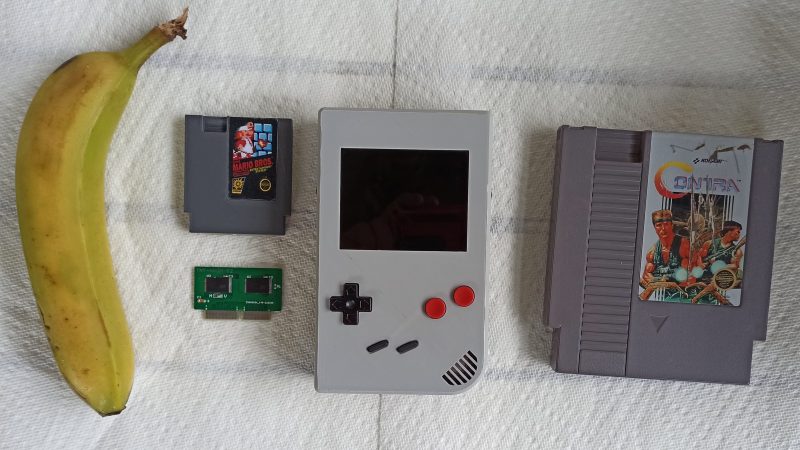These days, it’s possible to get a single-board computer the size of a stick of gum. This will give you the power to emulate thousands of games and you can run one off batteries inside a handheld of your own devising. [Redherring32] took an altogether more creative and old-school approach with the TinyTendo, however. This is one pocket-sized NES that actually runs on genuine hardware. (Nitter)
The feat was achieved by drastically reducing the size of the original NES hardware to make it fit into a Game Boy style form factor. Key to this work was creating a custom cut-sized motherboard which uses original Nintendo DIP chips that have been machined down to become more like QFN-style surface mount packages. With that done, the chips can be assembled onto the TinyTendo PCB which is even smaller than a contemporary Raspberry Pi 3. It’s all assembled in a custom case, with USB C for charging and a bright and colorful LCD screen.
The TinyTendo is designed to use mini-cartridges created by [Bucket Mouse], a hacker who’s no stranger to impressive custom Game Boy hardware. By virtue of running genuine NES hardware, there’s also the possibility that the TinyTendo could play full-sized NES carts with a simple adapter.
This project has been a long time in the making; we first looked at [Redherring32]’s efforts back in 2021. It begs the question why the original NES was so big when Nintendo clearly had plenty of space to spare in those hefty DIP packages! It’s amazing what can be done with some creativity and perseverance.
This is TinyTendo, a real hardware NES handheld that is the size of the original GameBoy.
This is not emulation, it is not a Pi, it is not a NOAC, and it is not an FPGA.
This is real NES hardware from a real NES.This project will also be open sourced in a few weeks. pic.twitter.com/Csf10EYPcc
— Redherring32 (@redherring32) May 24, 2022















> why the original NES was so big
as a unit, the original NES was so big because the designers wanted it to be taken seriously by the American market and designed it to look and work like something that belonged next to a VCR. The Japanese Famicom (and its cartridges) are tiny in comparison.
(mind you, this project makes the Famicom look huge too – an impressive feat!)
as for the chips, c’mon, it was 1984. Something like 90% of electronics manufactured (including the NES mainboard) were still through-hole soldered, so of course they’d be in standard-size DIP packages.
if only there was a kit for sale, or someone offering them, full assembled… I’d love one with an NES cartridge adapter. 🥰
NES-on-a-chip chips are still readily available, AFAIK, and hand-helds like this can be bought for $10 on AliExpress. Still a fun project though.